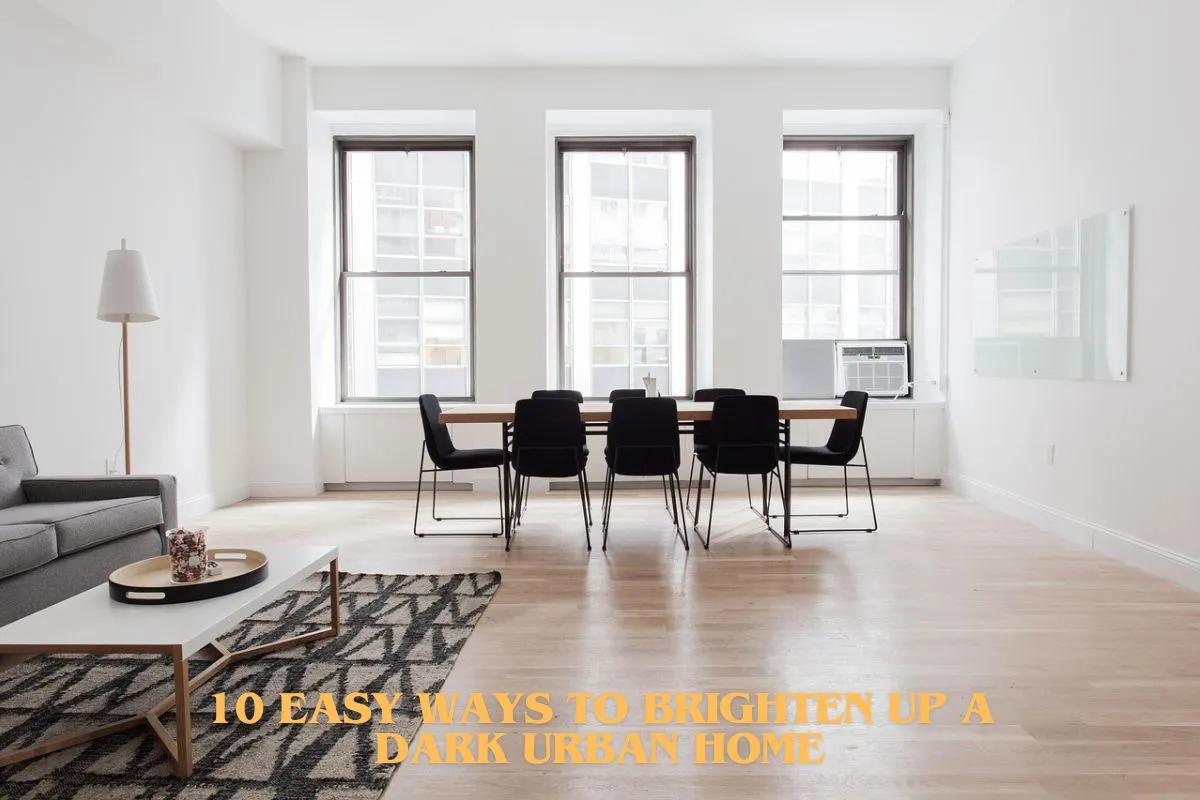Urban homes often come with their kind of charm – exposed brick, quirky layouts, industrial finishes, and rooftop views. But they also come with a common downside: a serious lack of natural light. Whether you’re in a basement flat, sandwiched between tall buildings, or in a terraced home with small windows, dark interiors can make your home feel smaller, gloomier, and less inviting.
The good news is that you don’t always need major renovations to fix it. There are plenty of smart, simple design ideas you can use to make your space feel brighter, bigger, and more welcoming – no matter where you live.
Here are 10 easy ways to brighten up a dark urban home, based on practical design principles and advice from our team.
1. Use Mirrors to Reflect Light
If your space lacks windows or direct sunlight, mirrors can work wonders. Placing a mirror directly opposite a window helps bounce natural light back into the room, instantly making it feel bigger and brighter.
In smaller flats or narrow hallways, mirrored panels or wardrobes can visually double the space. In kitchens, try a mirrored splashback behind the hob or sink to reflect light across the room. Even decorative wall mirrors can help brighten dark corners or entryways without adding any clutter.
2. Paint Walls in Light, Reflective Colours
Dark paint colours might look dramatic in magazines or on Pinterest, but they tend to absorb light, making rooms feel smaller. To reflect more light around your home, stick to pale shades like off-white, warm taupe, soft grey, or cream. These hues act like a canvas, bouncing daylight across the space.
If you want to add a hint of colour, opt for pastels – think powder blue, blush pink, sage green, or soft lavender. Don’t forget your ceiling, either. A bright white or slightly lighter tone than the walls draws the eye upward and creates a more spacious, airy feel.
3. Swap Heavy Curtains for Sheer Blinds
Privacy is a common issue in urban homes, especially with neighbours close by. But heavy curtains can end up blocking out all the daylight, too. A better option? Replace them with sheer curtains, voile panels, or light-filtering roller blinds.
Sheer fabric lets in sunlight while maintaining your privacy, particularly ideal for front-facing windows or overlooked spaces. If you need something more substantial at night, layer with blackout blinds or thicker curtains that can be drawn when needed. This way, you get the best of both worlds.
4. Layer Your Lighting Strategically
One central bulb in the middle of the ceiling just won’t cut it in a dark room. Instead, focus on layered lighting: a mix of ambient (overhead), task (for workspaces or reading), and accent lighting (to highlight features or corners).
Use floor lamps to lift gloomy corners, add under-cabinet lighting in the kitchen, or install wall lights to illuminate vertical space. Choose LED bulbs with a cooler colour temperature to mimic daylight – anything between 4000K and 5000K works well. Dimmable switches also let you adjust the brightness throughout the day.
5. Choose Glossy Finishes and Glass Furniture
Glossy surfaces are a clever way to increase the sense of light in any room. From high-shine kitchen cabinets to lacquered sideboards, glass dining tables or polished wood floors, reflective materials help light travel further.
In living rooms or smaller spaces, consider swapping bulky wooden furniture for glass, acrylic, or metal alternatives. These materials feel lighter, don’t visually dominate the space, and help maintain a sense of openness. Even little things – like chrome handles, mirrored trays or metallic light fittings – can amplify the effect.
6. Install Flat Roof Skylights
If you’re lucky enough to live in a top-floor flat, converted loft, or have a flat-roofed extension, adding a flat roof skylight is one of the most effective ways to bring in natural light.
Unlike traditional windows, skylights bring sunlight in from above, allowing light to flood the space even on overcast days. They’re ideal for kitchens, bathrooms, and stairwells – anywhere light is limited by walls or neighbouring buildings.
View skylights from Toughened Glass Systems today.
7. Create Light Wells or Install Light Shafts
If your home has internal rooms with no direct access to external windows, such as basements, hallways, or enclosed bathrooms, a light shaft or light well can completely transform the space.
By linking a skylight to a vertical shaft, you can channel daylight down into otherwise windowless areas. It’s a more involved renovation, but the effect is dramatic, and it’s often the best solution when all other options have been exhausted. For those renovating or extending, light wells are well worth considering early in the planning phase.
8. Keep Windows Clean and Uncluttered
This one may sound obvious, but clean windows make a huge difference. Dust, pollution, fingerprints, and grime can all reduce the amount of light coming into your home. Giving them a regular clean – inside and out – ensures you’re making the most of whatever daylight you have.
Take a look at what’s around your windows, too. Avoid placing furniture directly in front of them, and remove any large plants or clutter from the window sills. Even swapping dark, heavy window frames for lighter ones can increase the perceived brightness of a room.
9. Add Light Rugs and Flooring
Floors take up a large visual area in most rooms, so if you have dark wood, tiles, or carpets, they may be soaking up light. Light-coloured flooring, whether it’s whitewashed wood, pale stone, or soft neutral carpet, helps reflect daylight and instantly brightens the room.
If you’re not ready to replace your flooring, consider using large, light-toned area rugs. These can break up darker surfaces and bounce more light around. Choose soft textures to add warmth and contrast with surrounding furniture, without making the space feel heavy.
10. Bring in Houseplants that Love Shade
While it might seem counterintuitive to add greenery to a dark room, houseplants can help a space feel fresher and more vibrant, especially if you choose species that thrive in low-light conditions.
Try snake plants, ZZ plants, pothos, or peace lilies – all of which cope well with indirect sunlight. Place them near windows to make use of the available light, and choose light-coloured or reflective plant pots to avoid making corners feel heavy. A bit of greenery softens harsh lines and adds life, even in the darkest of spaces.
Final Thoughts
Urban living doesn’t have to mean putting up with gloomy rooms and dim corners. With just a few clever updates – from mirrors and lighting layers to skylights and reflective surfaces – you can completely transform your space and let the light in.
Whether you’re a homeowner, renter, or in the middle of a renovation, there are always ways to make your space feel brighter and more welcoming. Start small, be strategic, and focus on what will make the biggest impact for your home.










